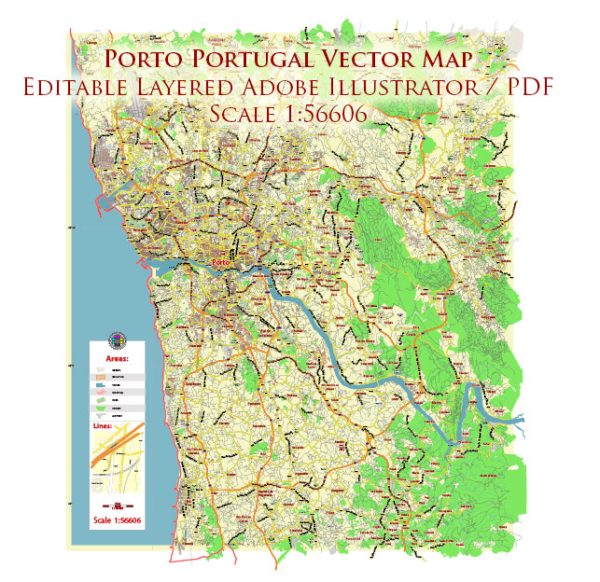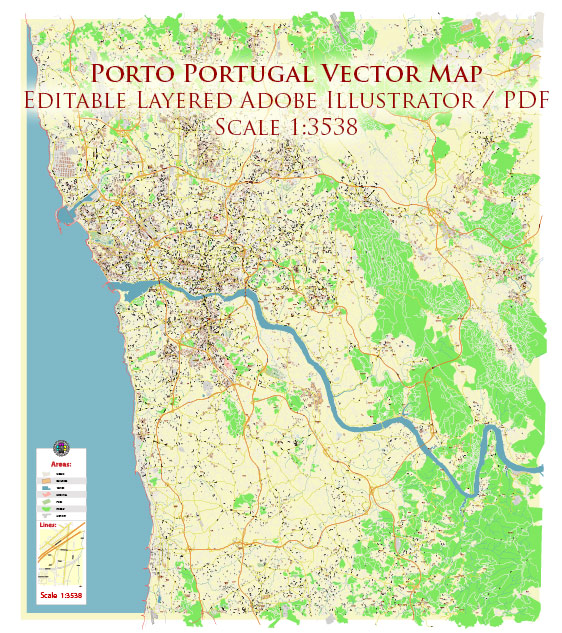Porto, Portugal, is renowned for its rich architectural heritage, which reflects a fascinating blend of styles and influences spanning centuries. The city’s architectural landscape features a combination of historic and contemporary elements, making it a unique and picturesque destination. Here’s a brief description of Porto’s architectural highlights:
- Ribeira District: This UNESCO World Heritage-listed area is one of Porto’s most iconic neighborhoods. Its narrow, winding streets are lined with colorful, centuries-old buildings featuring intricate ironwork balconies and tiled facades. The Ribeira’s architecture represents a mix of Romanesque, Gothic, and Baroque styles.
- Churches and Cathedrals: Porto boasts several stunning religious structures. The Porto Cathedral (Sé do Porto) is a prime example of Romanesque architecture, while the Church of São Francisco showcases a more elaborate Gothic style. These churches often feature ornate interiors with intricate woodwork and gilded altars.
- Livraria Lello: This historic bookshop is known for its neo-Gothic architecture. The interior is equally impressive, with an elaborate wooden staircase and stained glass ceiling. It’s often considered one of the most beautiful bookstores in the world.
- Palácio da Bolsa: The Stock Exchange Palace is a 19th-century building that blends Neoclassical and Gothic architectural styles. The Arabian Room within the palace is particularly renowned for its stunning design.
- Casa da Música: A contemporary architectural masterpiece, this concert hall was designed by the Dutch architect Rem Koolhaas. Its bold, asymmetrical lines and reflective surfaces stand out amidst Porto’s more traditional architecture.
- Ponte Dom Luís I: This iconic double-deck iron bridge designed by Théophile Seyrig connects Porto to Vila Nova de Gaia across the Douro River. It’s a fine example of 19th-century engineering and provides panoramic views of the city.
- Azulejos: Porto is famous for its use of azulejos, which are decorative ceramic tiles. These tiles adorn many buildings, both on exteriors and interiors, and often depict historical, religious, or artistic scenes.
- Art Nouveau and Art Deco: You can find examples of Art Nouveau and Art Deco architecture in Porto, such as the buildings along Avenida dos Aliados. These styles bring a touch of elegance and sophistication to the cityscape.
- Boavista Avenue: This broad, tree-lined avenue is flanked by a mix of architectural styles, including modernist, Neoclassical, and contemporary buildings. The most prominent structure here is the Casa da Música.
- Contemporary Architecture: Porto has seen a surge in contemporary architecture with projects like the Maia City Hall and the new subway stations, which showcase innovative and forward-looking designs.
Porto’s architecture is a reflection of its rich history, including its maritime and trade roots, as well as its artistic and cultural achievements. The city’s ability to seamlessly blend its historic charm with modern influences makes it a captivating destination for architecture enthusiasts and tourists alike.



 Author: Kirill Shrayber, Ph.D.
Author: Kirill Shrayber, Ph.D.